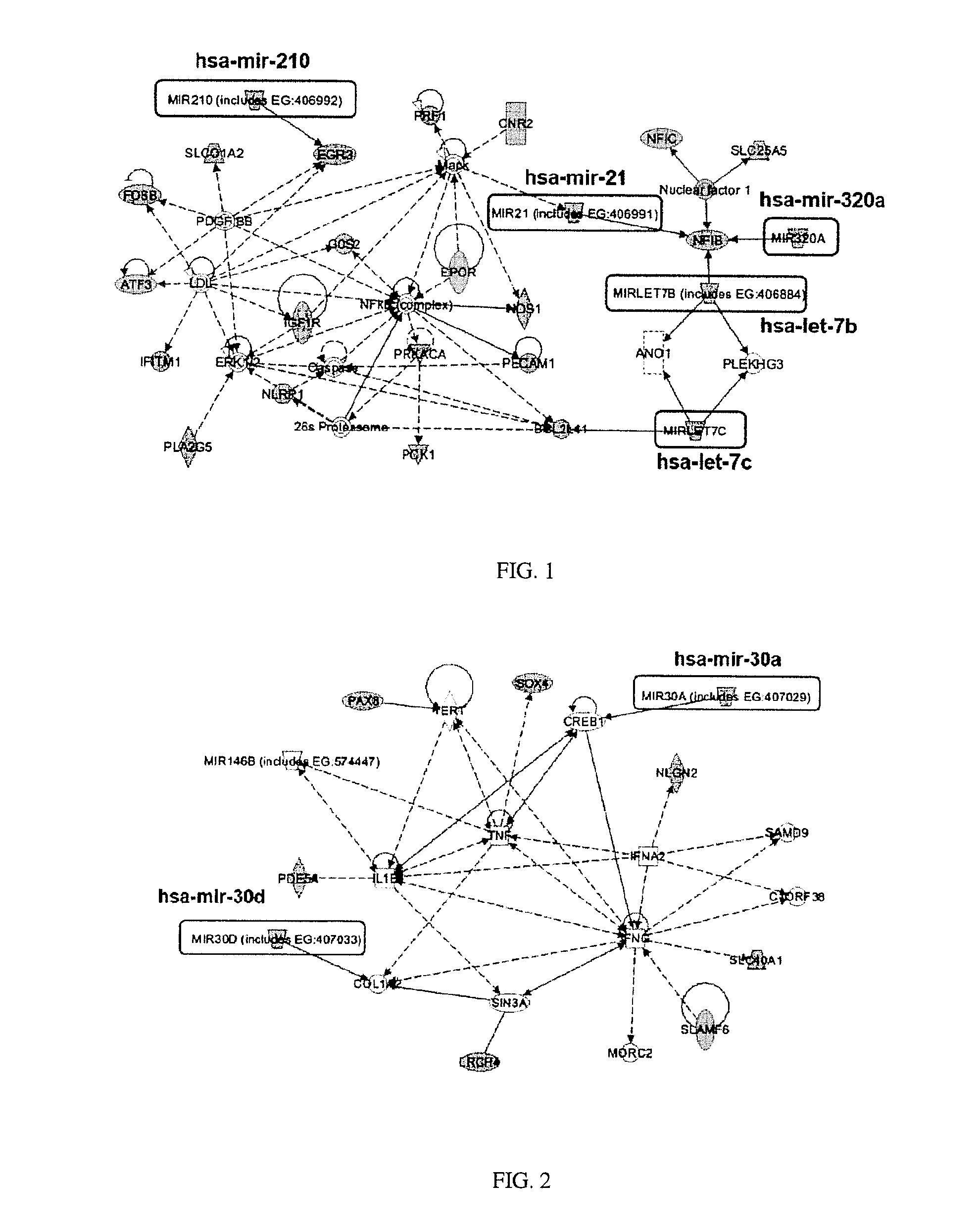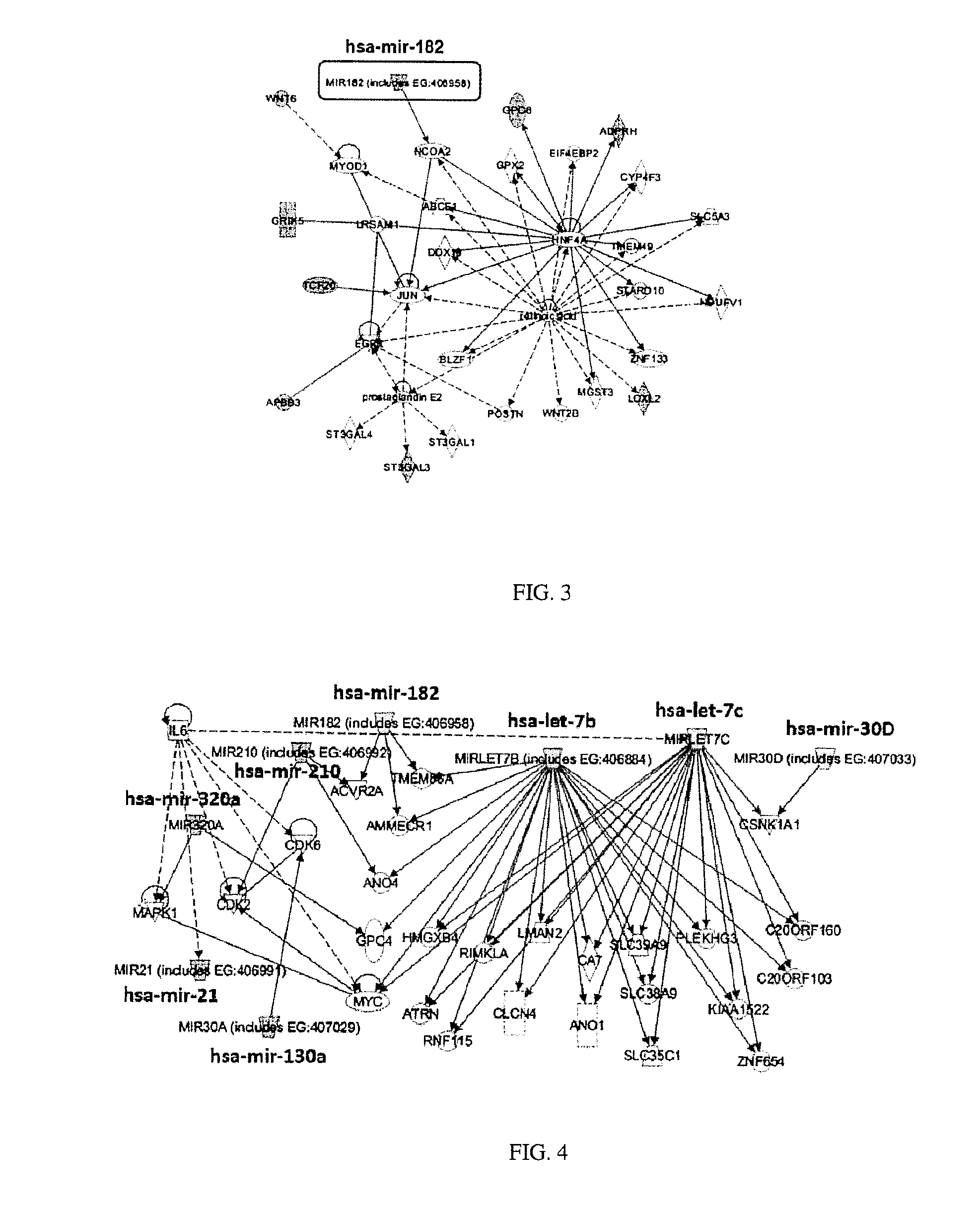Methods for selecting competent oocytes and competent embryos with high potential for pregnancy outcome
a technology of competent oocytes and embryos, applied in the field of selecting competent oocytes or competent embryos, can solve the problems of difficult implementation of biomarkers directly directed to oocytes or embryos, limited prediction power of this approach, etc., and achieve the effect of high implantation ra
- Summary
- Abstract
- Description
- Claims
- Application Information
AI Technical Summary
Benefits of technology
Problems solved by technology
Method used
Image
Examples
example
[0095]Samples:
[0096]Cumulus cells and mature MII oocytes were collected from patients consulting for conventional IVF (cIVF) or for ICSI (male infertility). Cumulus cells were removed from a mature oocyte (MII). CCs were partially separated mechanically from the corresponding oocyte as previously described (Assou et al., 2008). Unfertilized MII oocytes were collected 21 or 44 h after insemination or after microinjection by ICSI. Cumulus cells and oocytes were frozen at −80° C. in RLT buffer (RNeasy Kit, Qiagen, Valencia, Calif.) before miRNA extraction.
[0097]Methods for Determining the Expression Level of the microRNA:
[0098]Determination of the expression level of the microRNA can be performed by a variety of techniques known in the art.
[0099]Preferably, small RNA from cumulus cells and mature MII oocyte samples was extracted after storage of samples at −80° C. in RLT RNA extraction buffer supplemented with 1 μM of 2-β-mercaptoethanol (M-3148, Sigma) as described in the manufacturer...
PUM
| Property | Measurement | Unit |
|---|---|---|
| tem | aaaaa | aaaaa |
| mass | aaaaa | aaaaa |
| energy | aaaaa | aaaaa |
Abstract
Description
Claims
Application Information
 Login to View More
Login to View More - R&D
- Intellectual Property
- Life Sciences
- Materials
- Tech Scout
- Unparalleled Data Quality
- Higher Quality Content
- 60% Fewer Hallucinations
Browse by: Latest US Patents, China's latest patents, Technical Efficacy Thesaurus, Application Domain, Technology Topic, Popular Technical Reports.
© 2025 PatSnap. All rights reserved.Legal|Privacy policy|Modern Slavery Act Transparency Statement|Sitemap|About US| Contact US: help@patsnap.com


